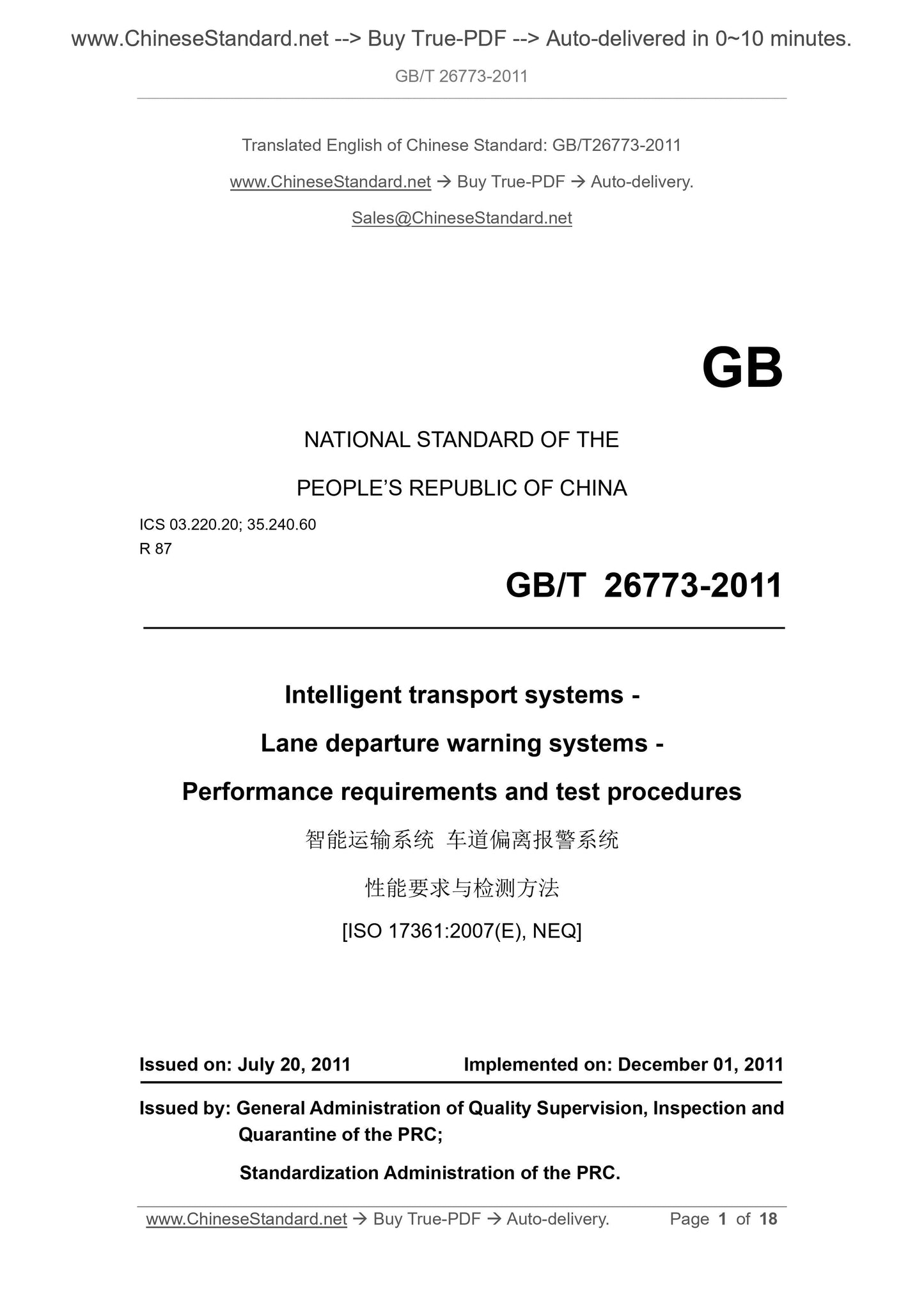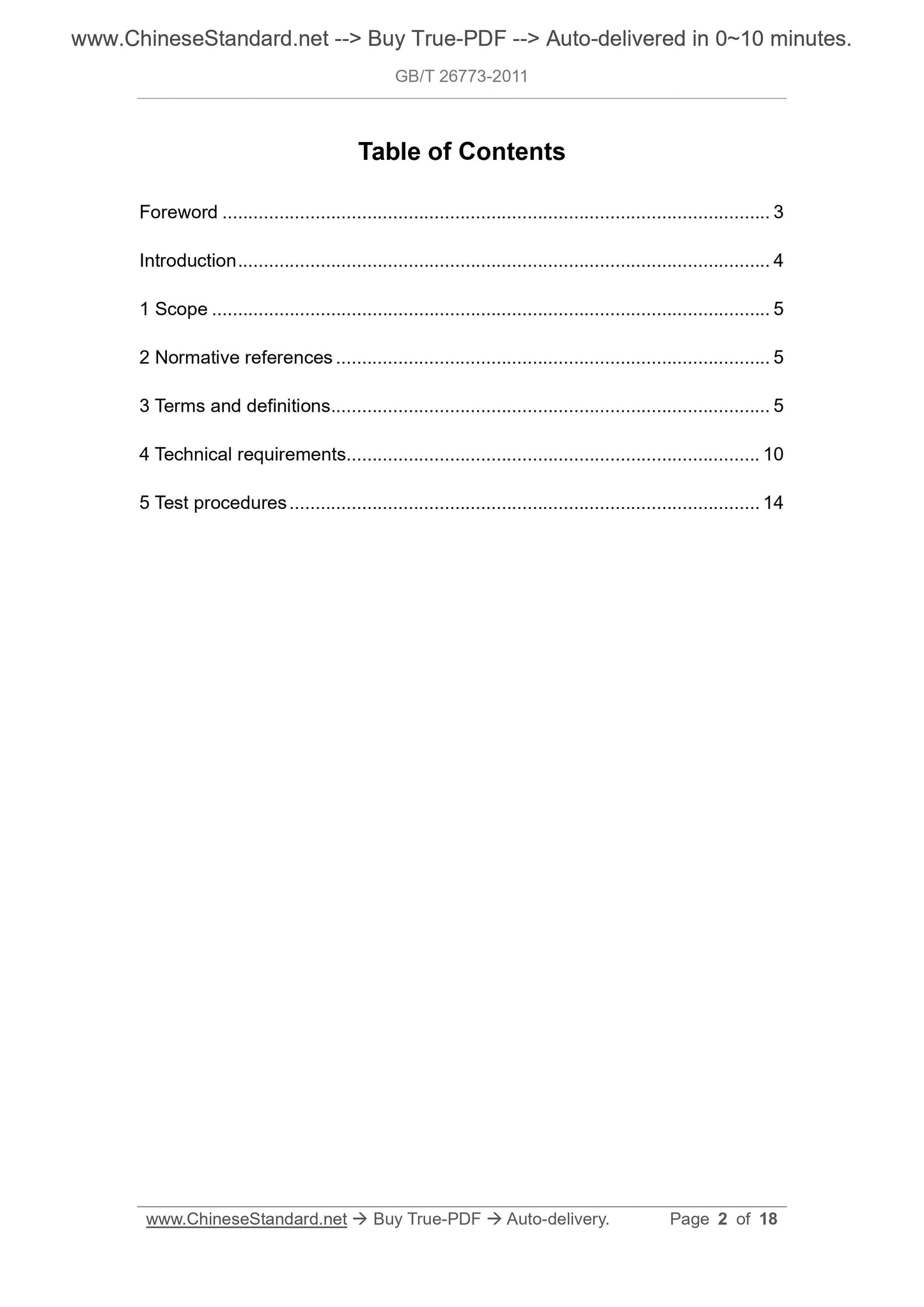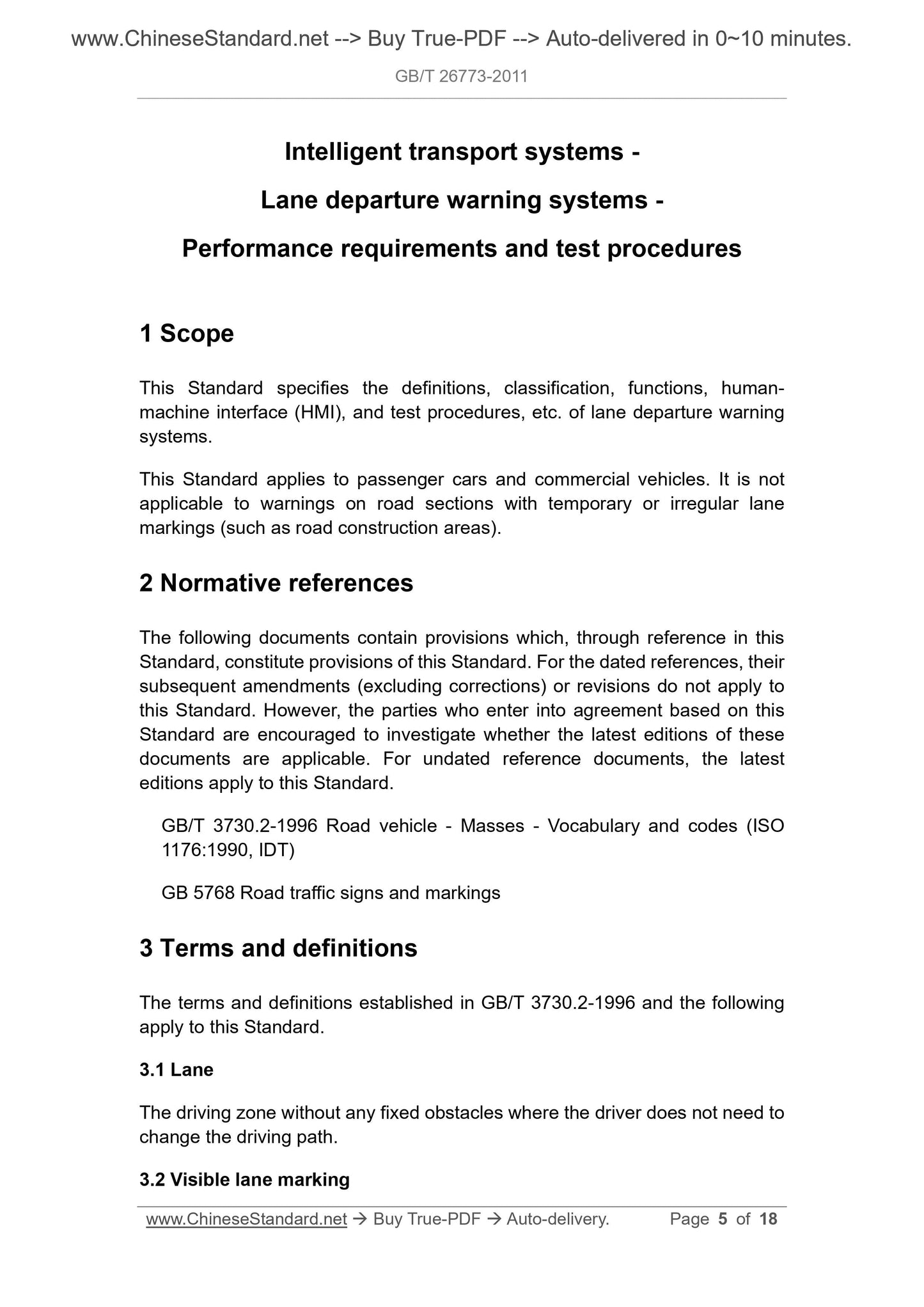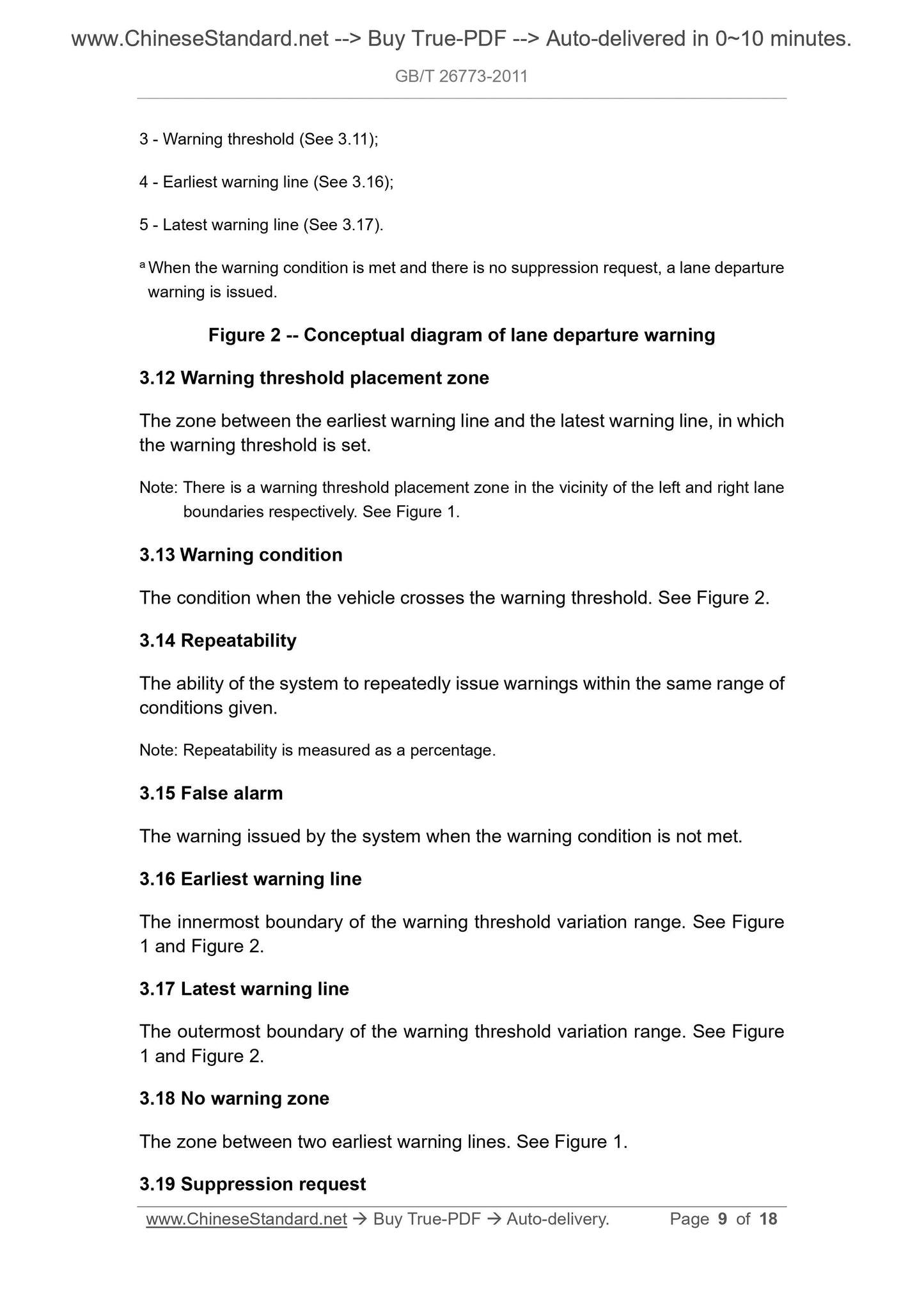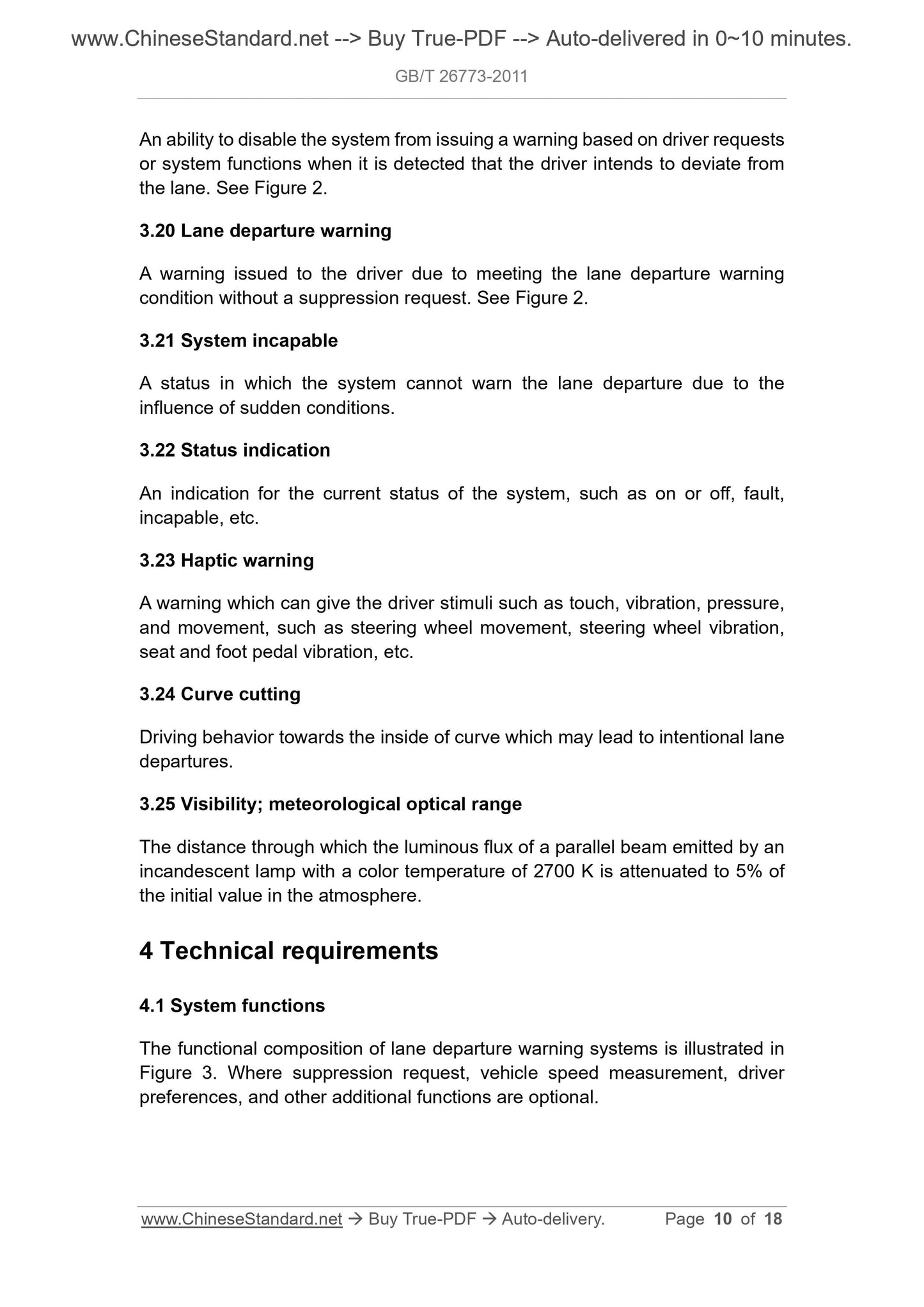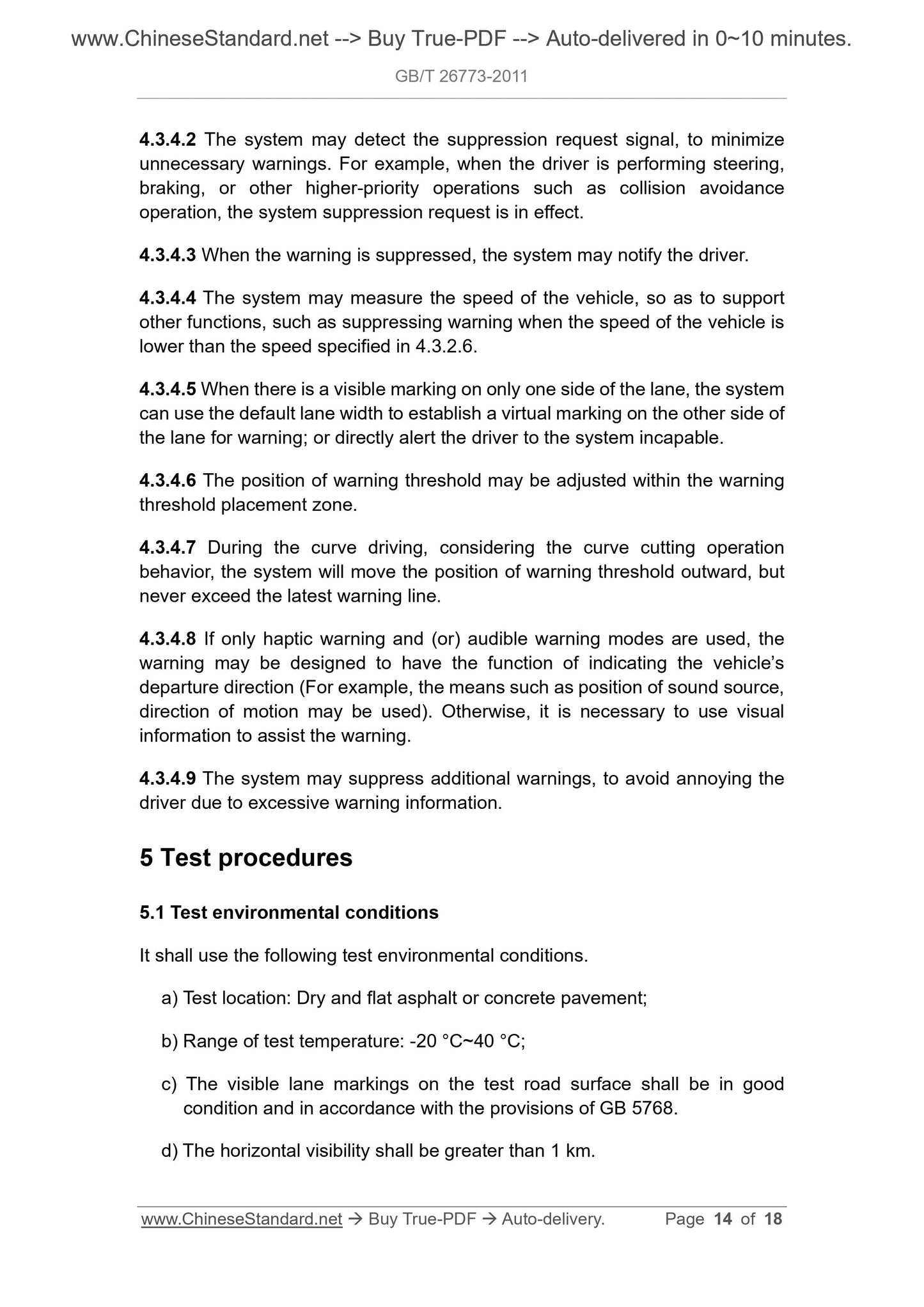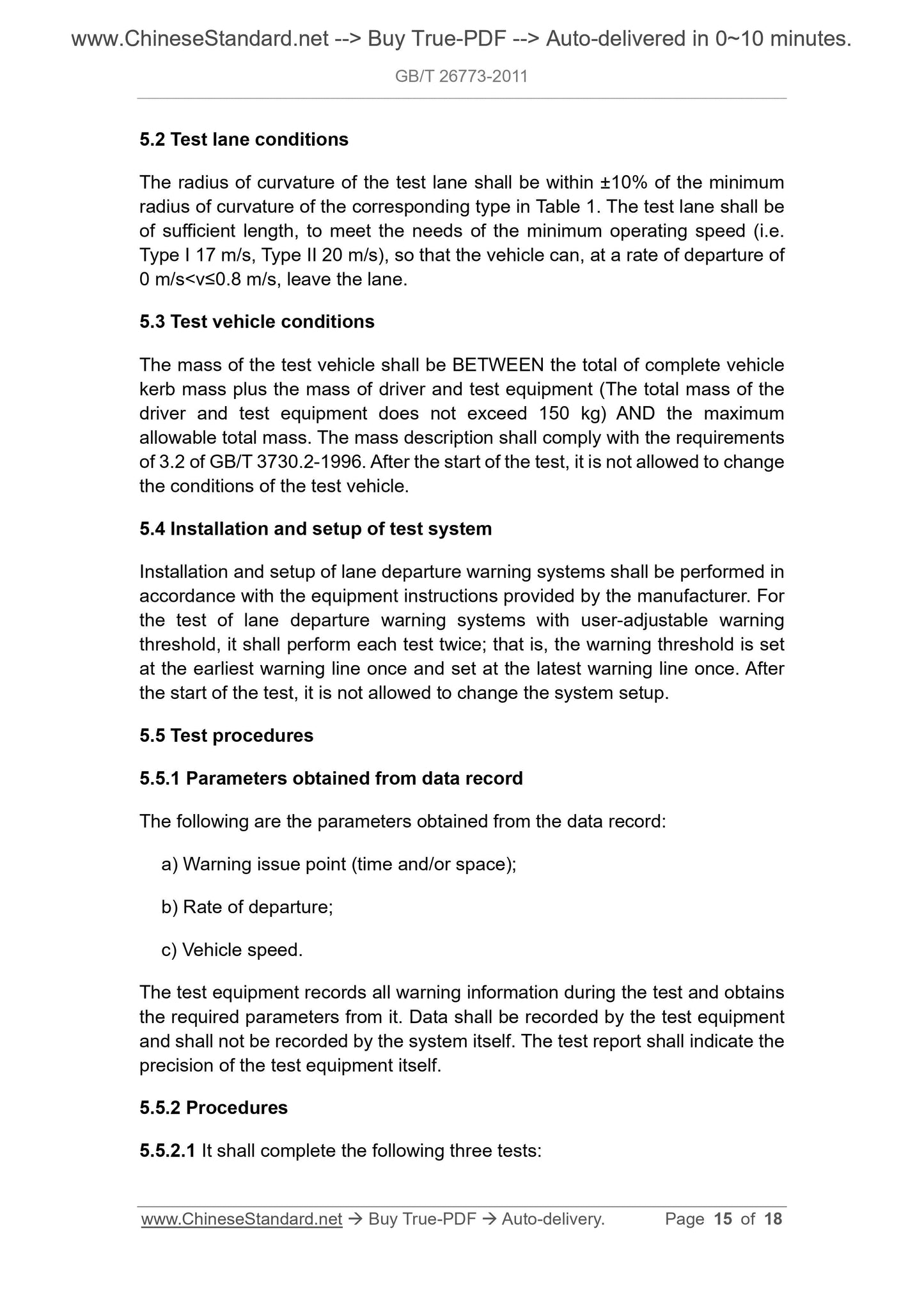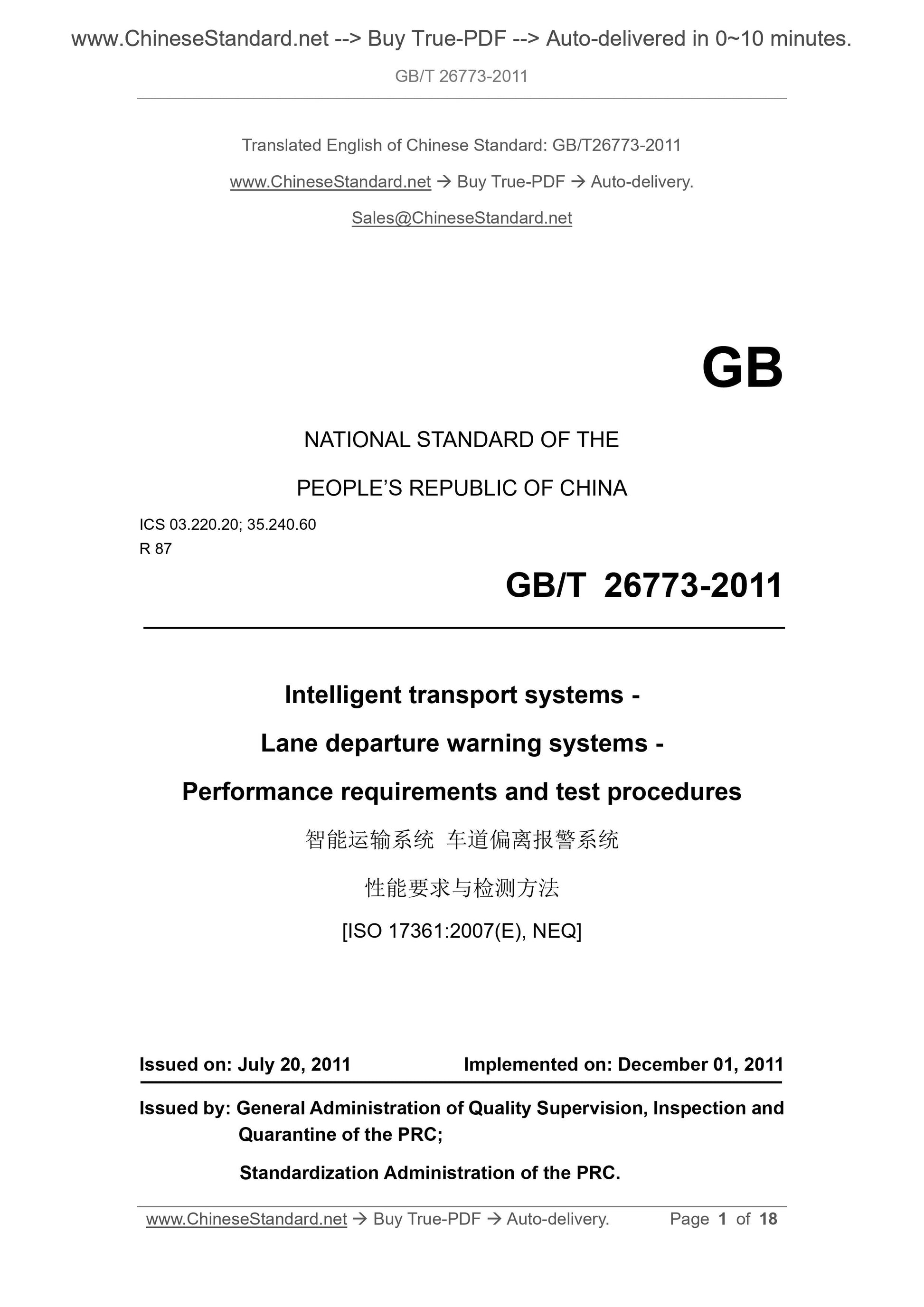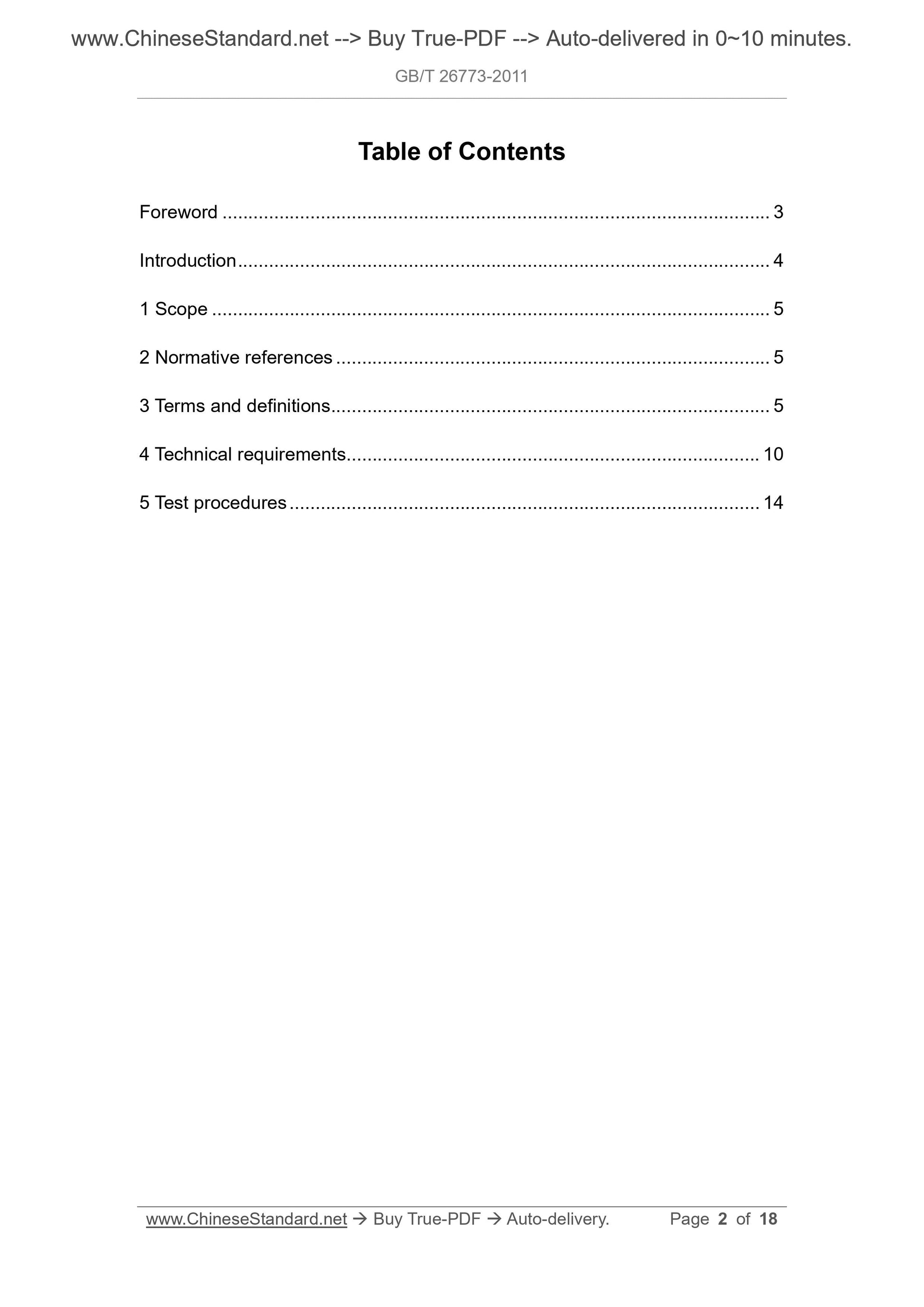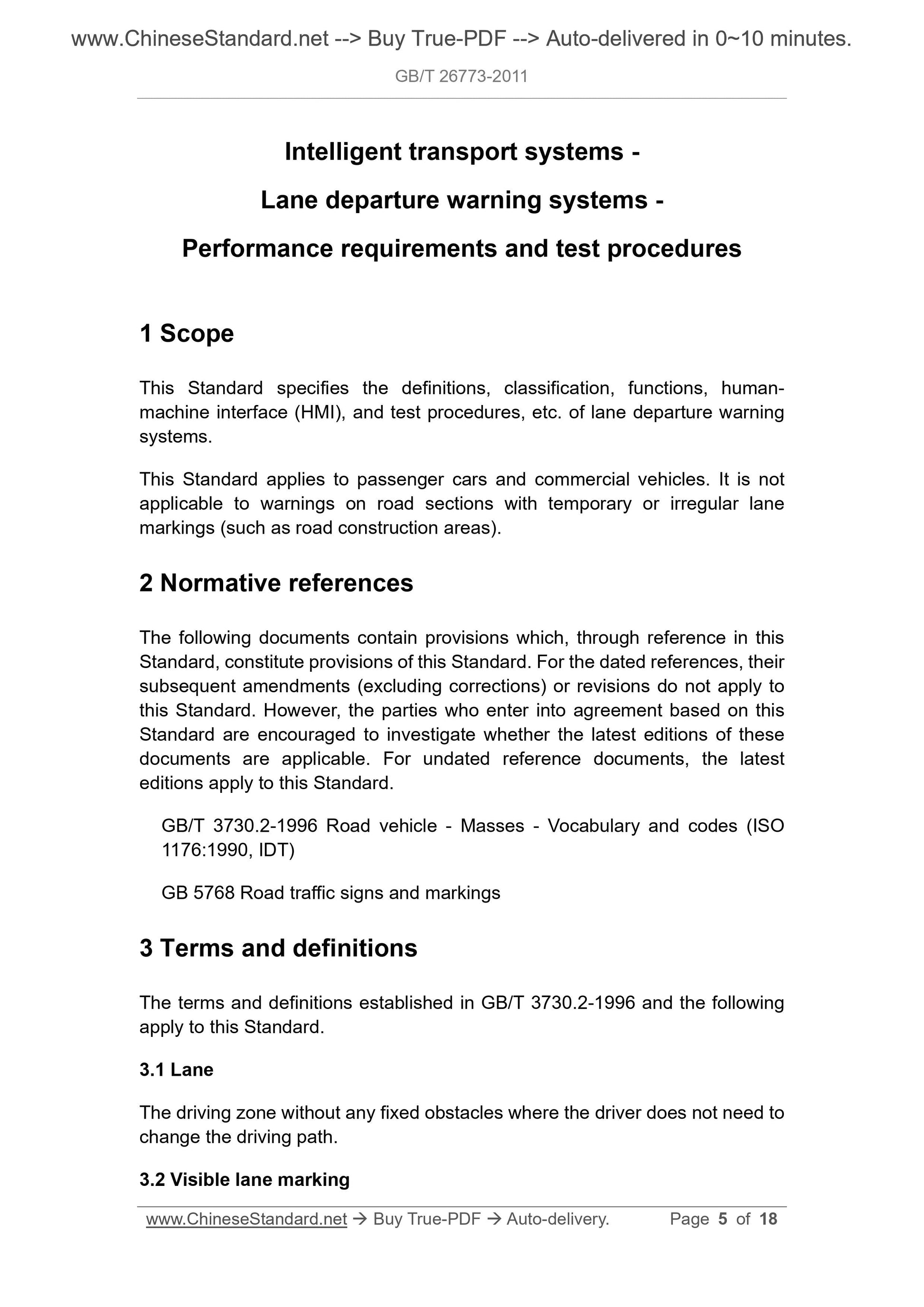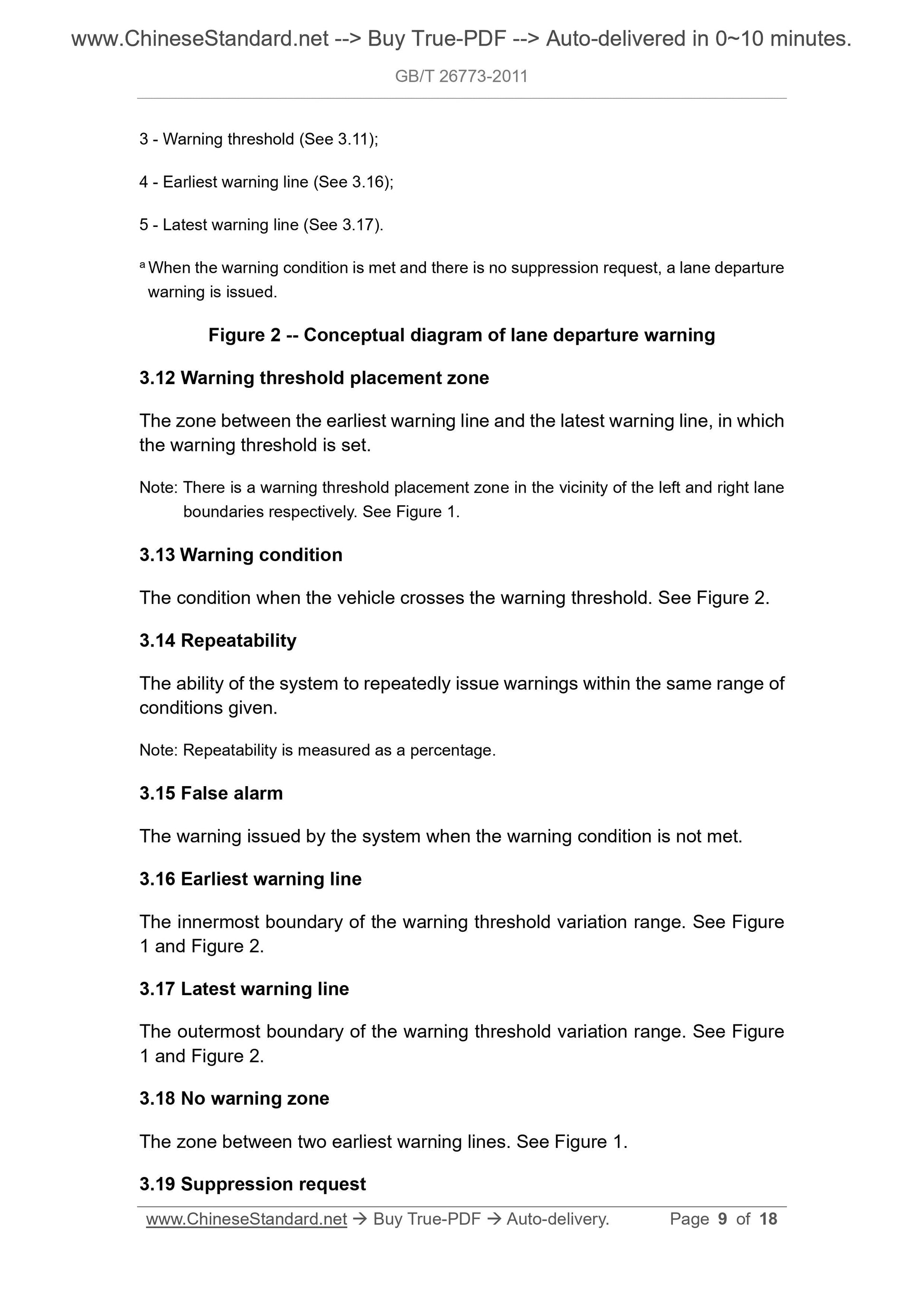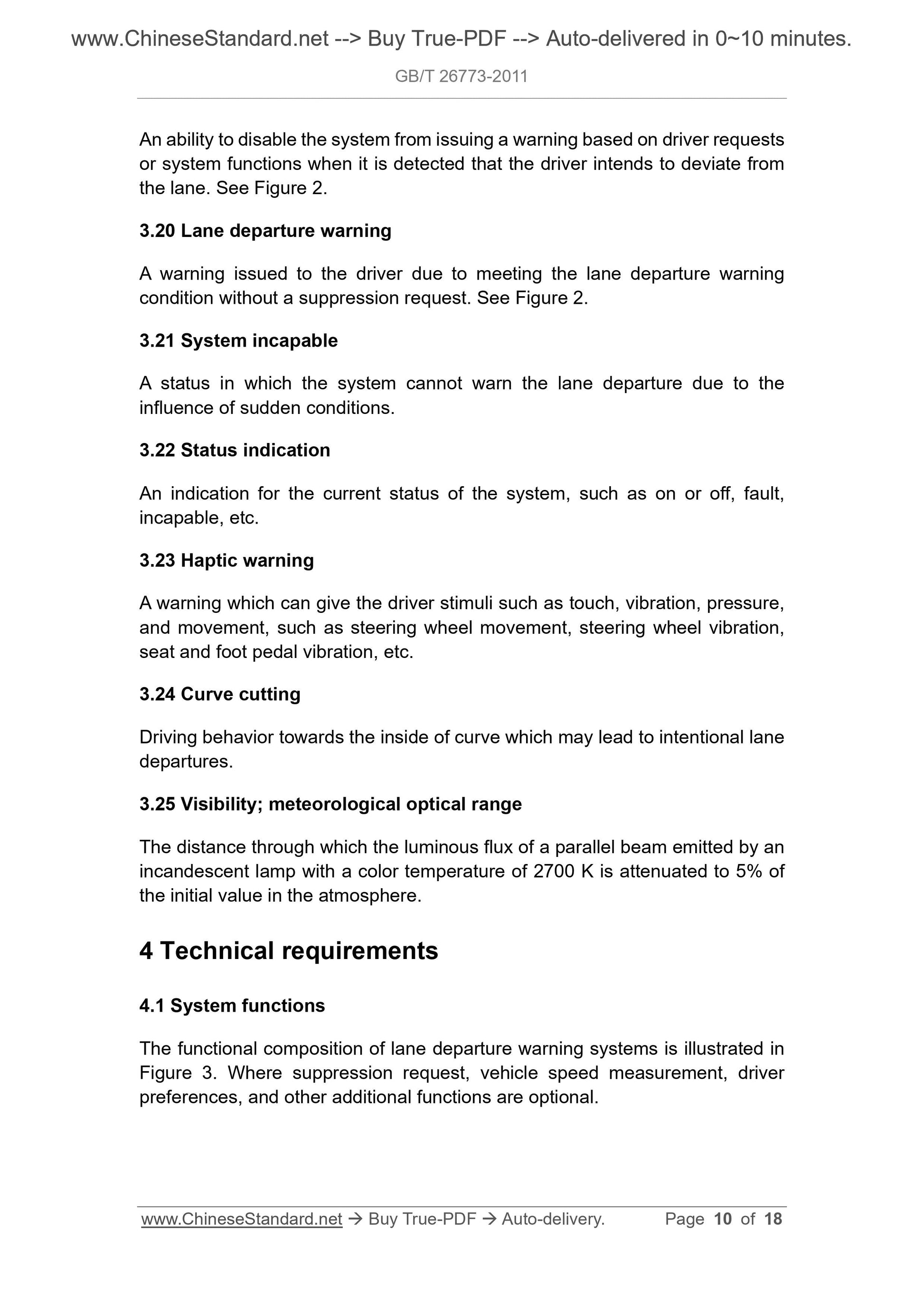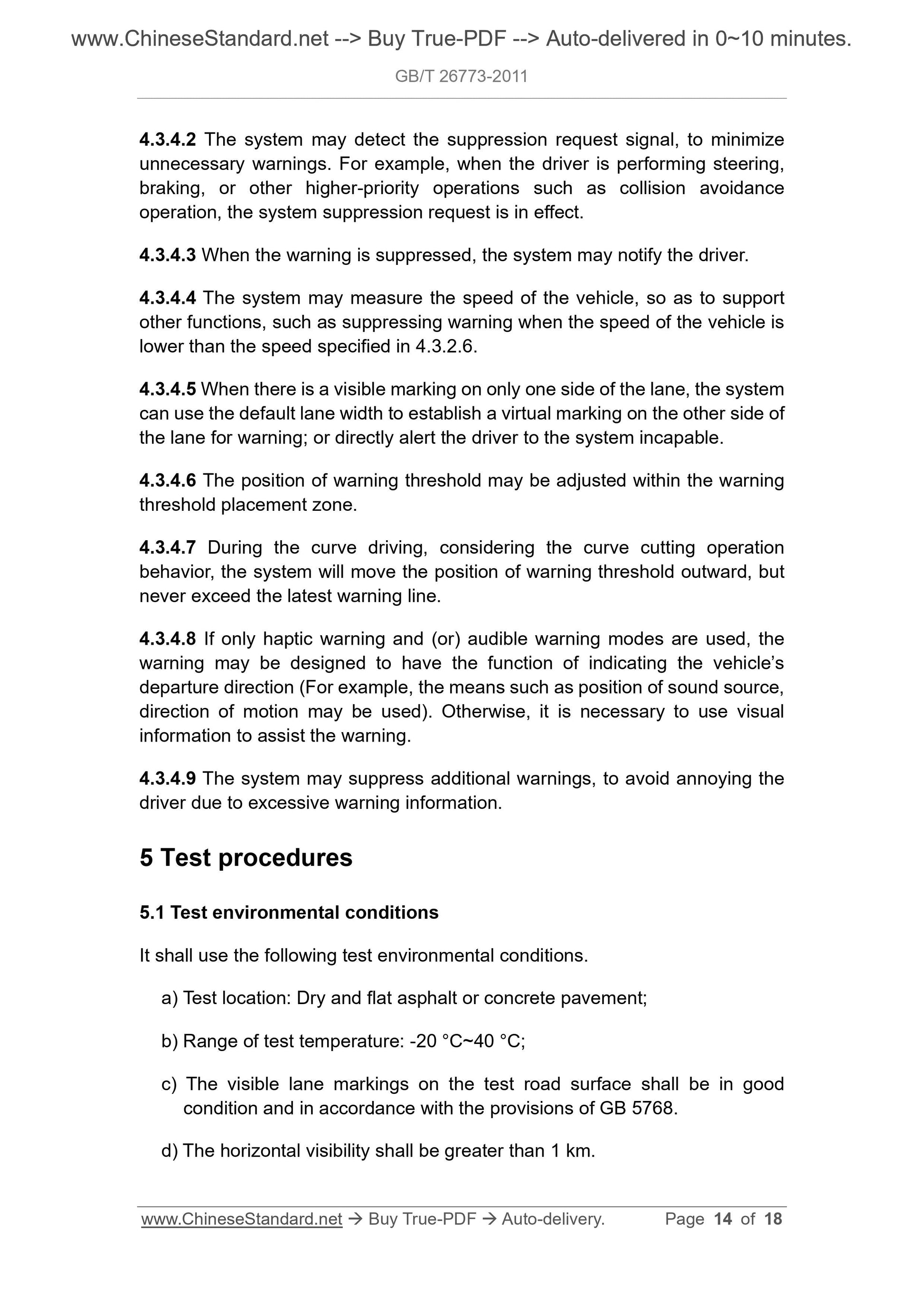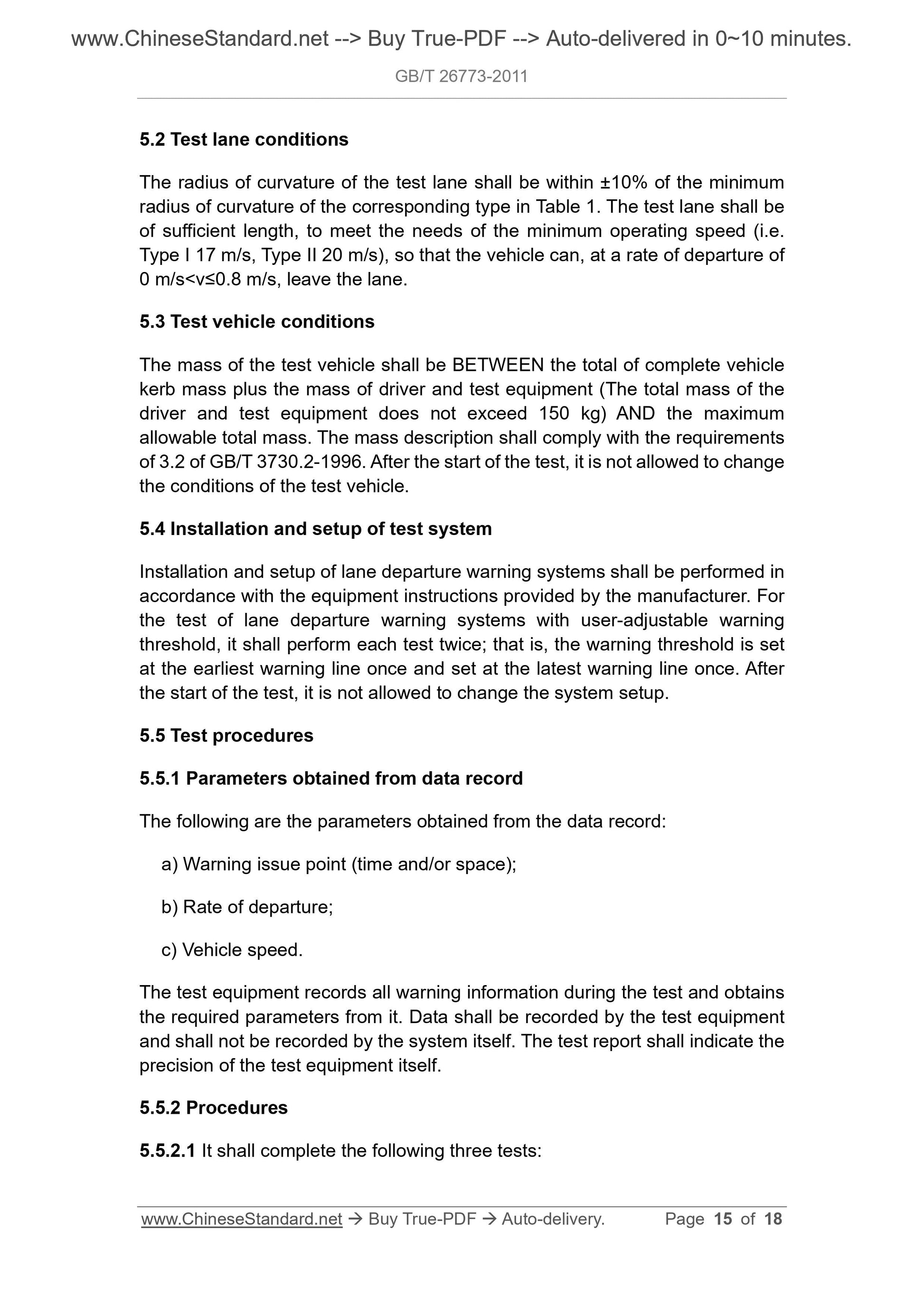1
/
of
7
www.ChineseStandard.us -- Field Test Asia Pte. Ltd.
GB/T 26773-2011 English PDF (GB/T26773-2011)
GB/T 26773-2011 English PDF (GB/T26773-2011)
Regular price
$145.00
Regular price
Sale price
$145.00
Unit price
/
per
Shipping calculated at checkout.
Couldn't load pickup availability
GB/T 26773-2011: Intelligent transport systems -- Lane departure warning systems -- Performance requirements and test procedures
Delivery: 9 seconds. Download (and Email) true-PDF + Invoice.Get Quotation: Click GB/T 26773-2011 (Self-service in 1-minute)
Newer / historical versions: GB/T 26773-2011
Preview True-PDF
Scope
This Standard specifies the definitions, classification, functions, human-machine interface (HMI), and test procedures, etc. of lane departure warning
systems.
This Standard applies to passenger cars and commercial vehicles. It is not
applicable to warnings on road sections with temporary or irregular lane
markings (such as road construction areas).
Basic Data
| Standard ID | GB/T 26773-2011 (GB/T26773-2011) |
| Description (Translated English) | Intelligent transport systems -- Lane departure warning systems -- Performance requirements and test procedures |
| Sector / Industry | National Standard (Recommended) |
| Classification of Chinese Standard | R87 |
| Classification of International Standard | 03.220.20; 35.240.60 |
| Word Count Estimation | 14,124 |
| Date of Issue | 2011-07-20 |
| Date of Implementation | 2011-12-01 |
| Quoted Standard | GB/T 3730.2-1996; GB 5768 |
| Adopted Standard | ISO 17361-2007 (E), NEQ |
| Regulation (derived from) | Announcement of Newly Approved National Standards No. 10 of 2011 |
| Issuing agency(ies) | General Administration of Quality Supervision, Inspection and Quarantine of the People's Republic of China, Standardization Administration of the People's Republic of China |
| Summary | This standard applies to passenger cars and commercial vehicles, does not apply to a temporary or non-standard lane roads identified (such as road construction area) on the alarm. |
Share
